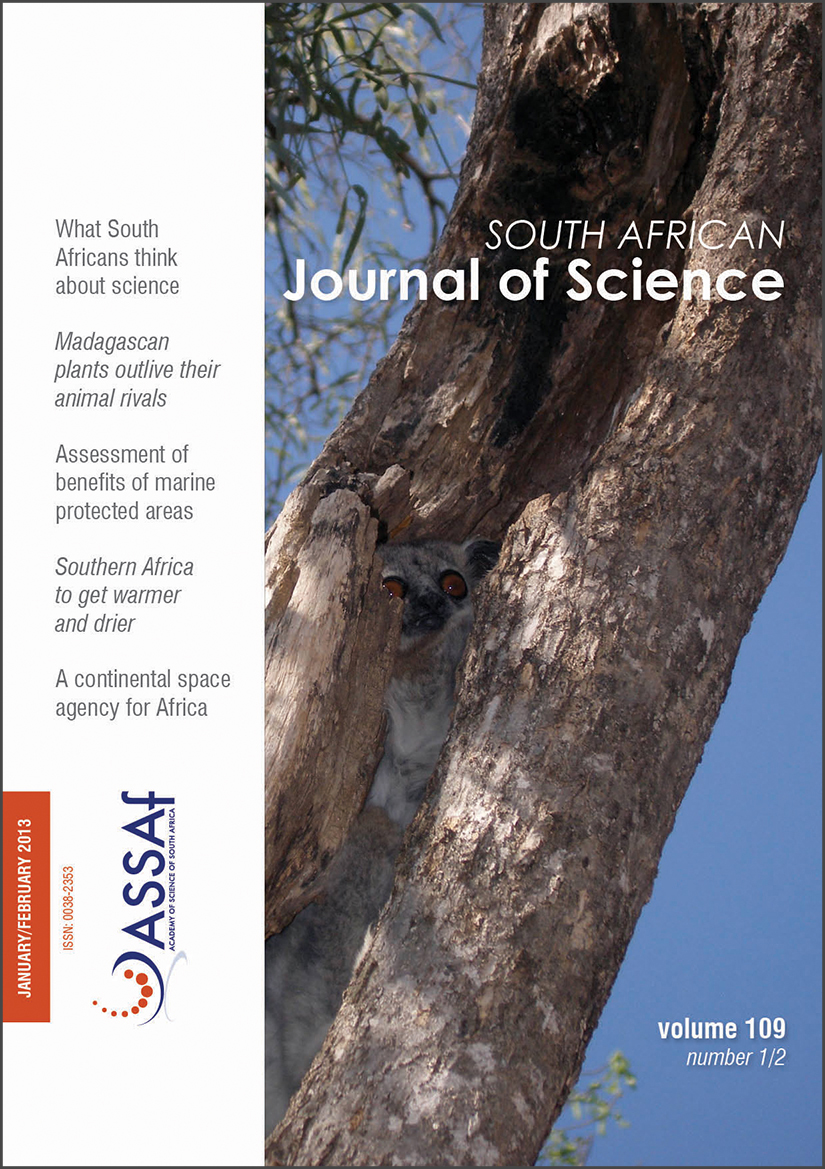A step-by-step framework to assess benefits of established temperate marine protected areas
DOI:
https://doi.org/10.1590/sajs.2013/1243Keywords:
conservation, fisheries management, spillover, Goukamma Marine Protected Area, temperate reef fish, South AfricaAbstract
Marine protected areas (MPAs) have been advocated as a solution to the challenges of both conservation and modern fishery management, but their application remains controversial, partly because there are only general guidelines for evaluating their effectiveness. We propose a framework to specifically evaluate established MPAs in six steps. We tested the approach by reviewing published research and unpublished information on the Goukamma MPA in the centre of the South African temperate south coast. Information reviewed included effects on the structure of fish populations, catch and abundance indices of fish species, and ecosystem effects. We investigated factors that determine the usefulness of a MPA in fisheries management, including the movement behaviour of adult fishes, larval dispersal and fisher-displacement patterns. We found that differences in the rates of exploitation across the MPA border resulted in differences in abundance, size and condition of the main target species, roman (Chrysoblephus laticeps). The diversity and abundance of non-target fish species, and the composition of the benthic invertebrate community, were affected by the cessation of fishing. The potential for ‘spillover’ of adult roman might be limited to the vicinity of the MPA by their small home range, but there is potential for self-seeding and dispersal of roman eggs and larvae over wider areas. These theoretical considerations were confirmed by an analysis of catch data from before and after MPA implementation. The framework presented here may help to identify and fill gaps in the knowledge of established MPAs along South Africa’s temperate south coast.
Published
Issue
Section
License

All articles are published under a Creative Commons Attribution 4.0 International Licence
Copyright is retained by the authors. Readers are welcome to reproduce, share and adapt the content without permission provided the source is attributed.
Disclaimer: The publisher and editors accept no responsibility for statements made by the authors
How to Cite
- Abstract 388
- PDF 520
- XML 363
- XML 178












.png)